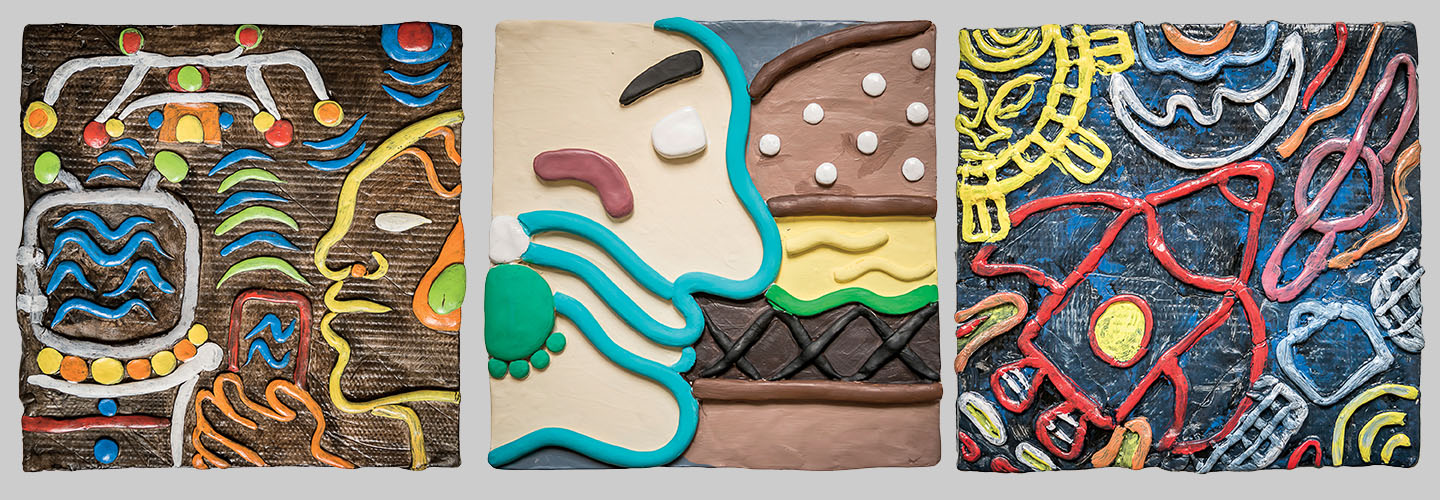How can you communicate using a language made of pictures? Study the two artworks on page 5 of this issue of Scholastic Art. The artists who crafted them depict Mayan gods and rulers and emphasize the narratives in each scene with glyphs. Share your own narrative by designing a glyph featuring contemporary images. You might explore technologies that you use every day, modern modes of transportation, contemporary forms of entertainment, or life at your school. Loosely sketch your ideas in pencil on paper. Your glyph should include simple, easily recognizable imagery. Once you’ve selected your theme and developed a rough sketch, draw an 8 inch x 8 inch square on a clean sheet of paper. Then create a final scale sketch of your design. Simplify any areas of the drawing that are vague or could confuse viewers.
Tip: Keep your design simple so it’ll be easy to interpret when you re-create it as a three-dimensional glyph.

